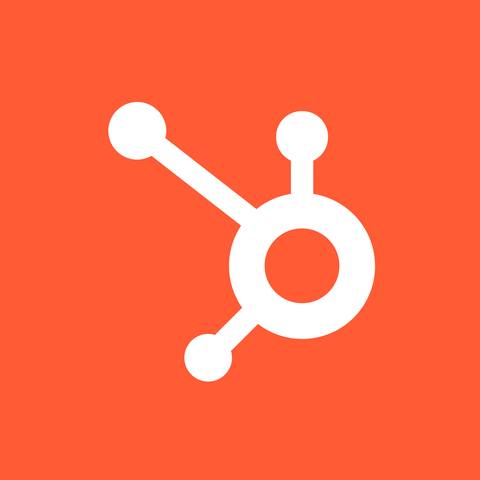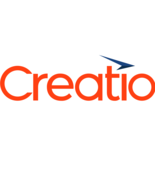

Wrike Reviews & Product Details
Harping on its versatility, Wrike is a project management software that features highly customizable dashboards and workflows and team-specific automation to give businesses a project platform that adapts to their current ways of working and not the other way around. Wrike’s functionalities involving over 400 tools revolve around giving a 360-degree view of projects, true interdepartmental collaboration, approvals acceleration, smarter data use, efficient workload management, and enterprise-grade security. Wrike has more than 30 well-documented use cases involving more than 15 departments and teams. Wrike also has a proprietary AI-powered capability called Work Intelligence that catalyzes results through smart automation and project risk prediction.

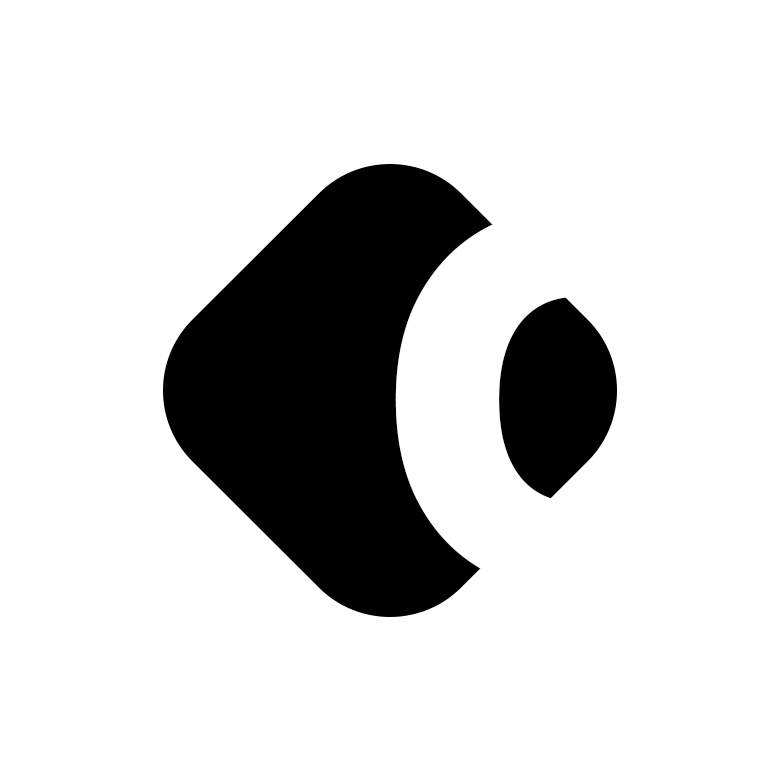
| Capabilities |
|
|---|---|
| Segment |
|
| Deployment | Cloud / SaaS / Web-Based, Desktop Mac, Desktop Windows, Mobile Android, Mobile iPad, Mobile iPhone |
| Support | 24/7 (Live rep), Chat, Email/Help Desk, FAQs/Forum, Knowledge Base, Phone Support |
| Training | Documentation |
| Languages | English |
Wrike Pros and Cons
- Easy to use Gantt charts
- Customizable dashboard and schedule
- Comprehensive reports and insights
- Time-tracking tools included
- Excellent customer service
- A little pricey
- Can be difficult to get used to at first
- Frequent reports of unresponsive support
- Recorded incidents of unreliable software functionality
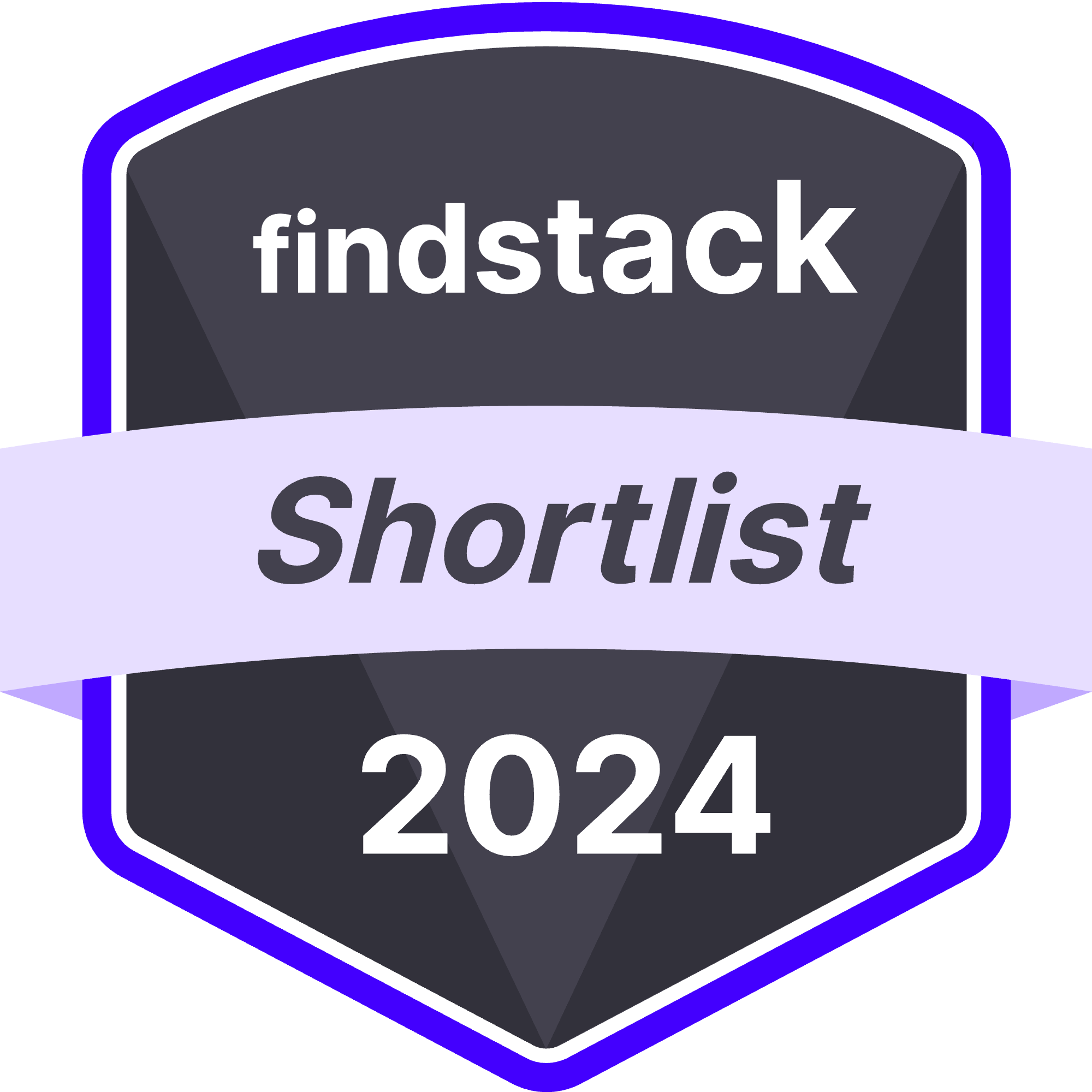

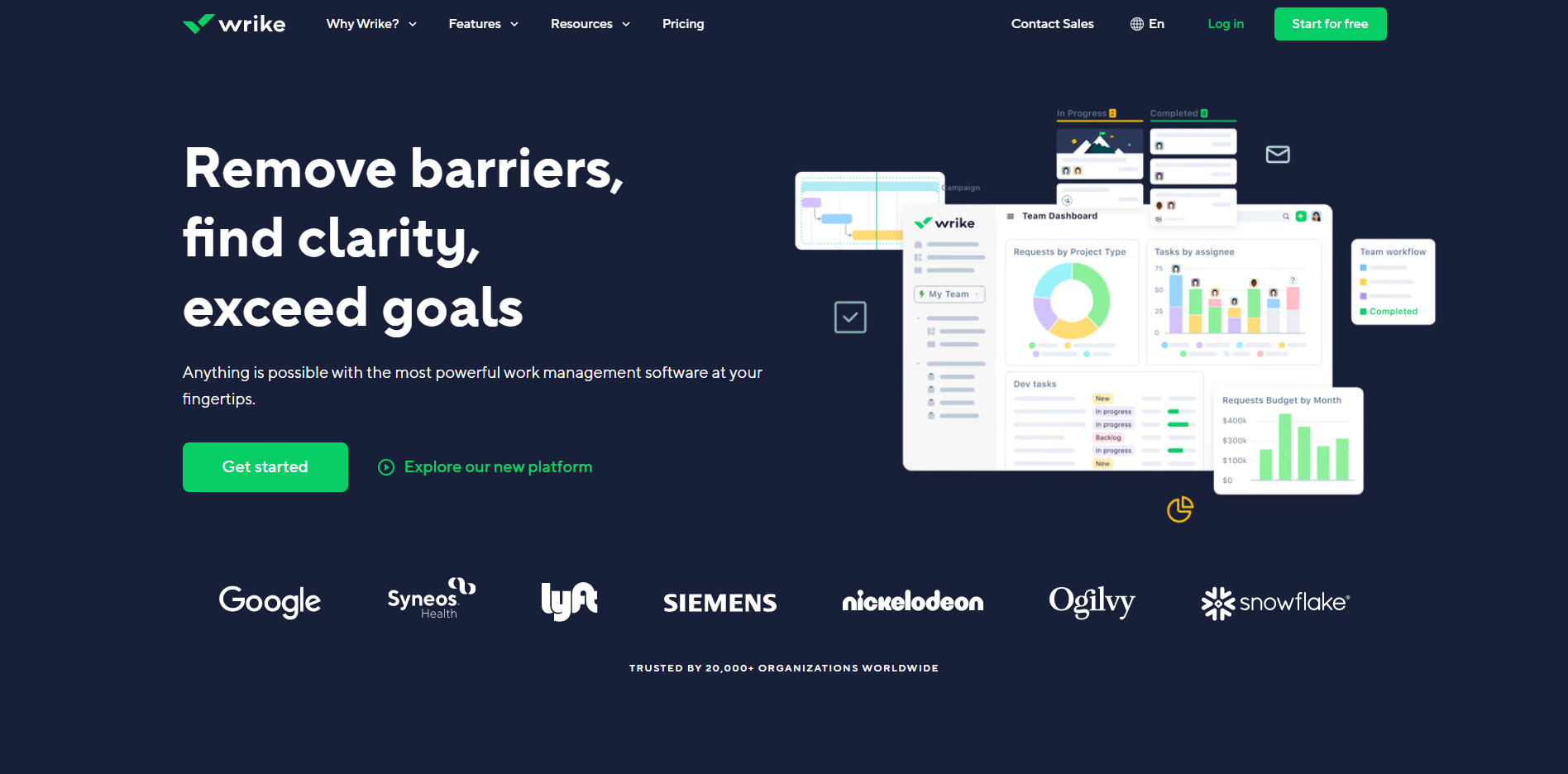
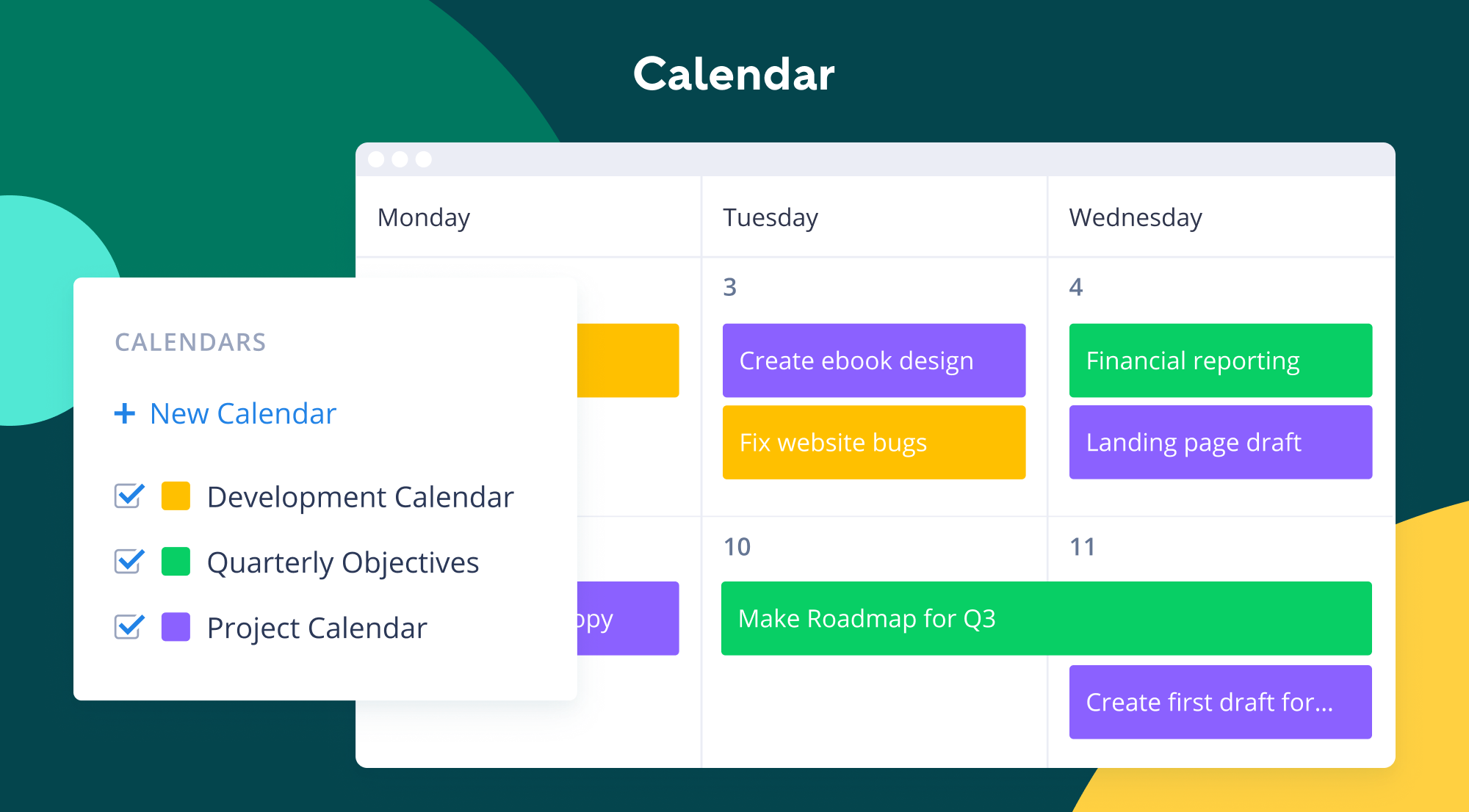
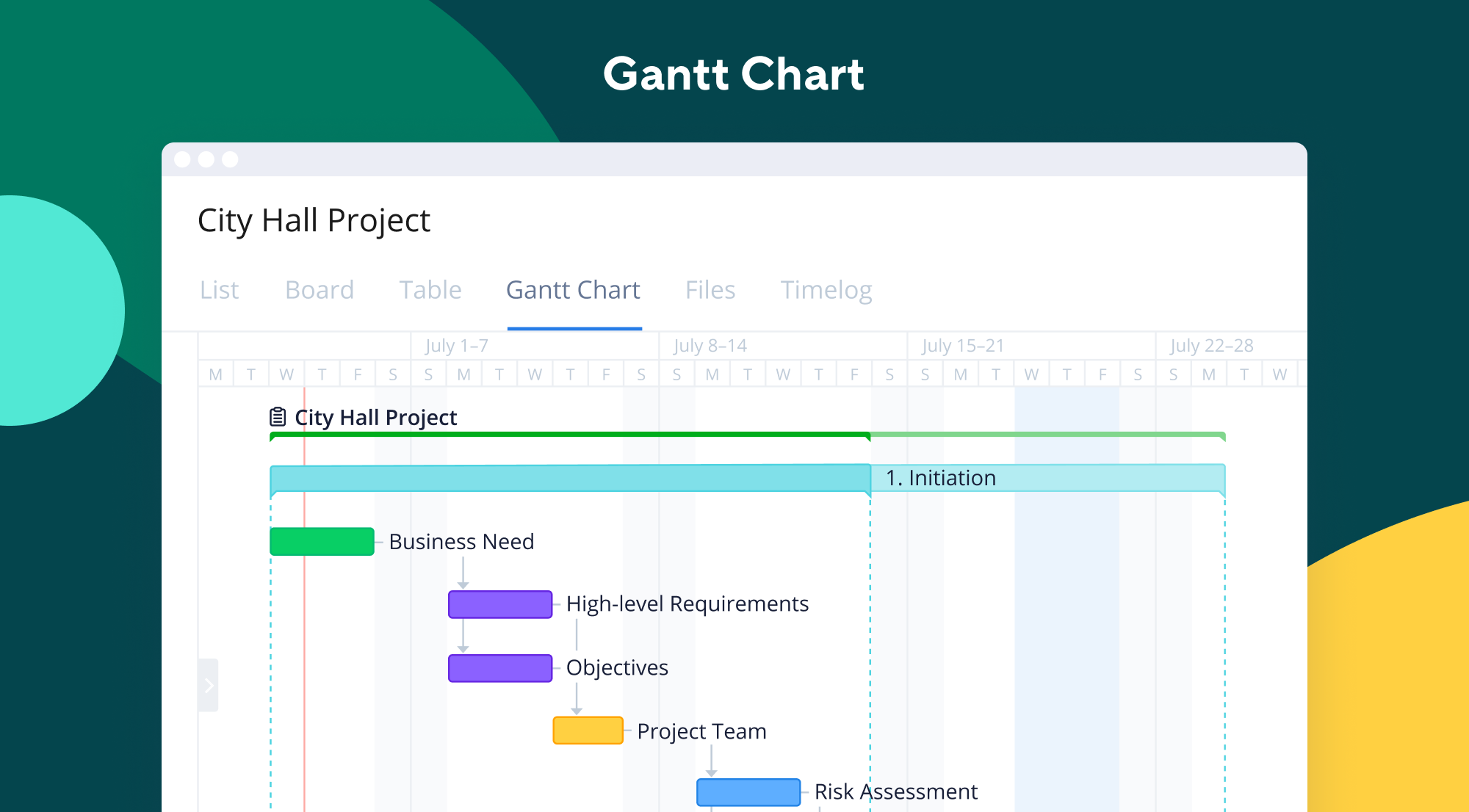
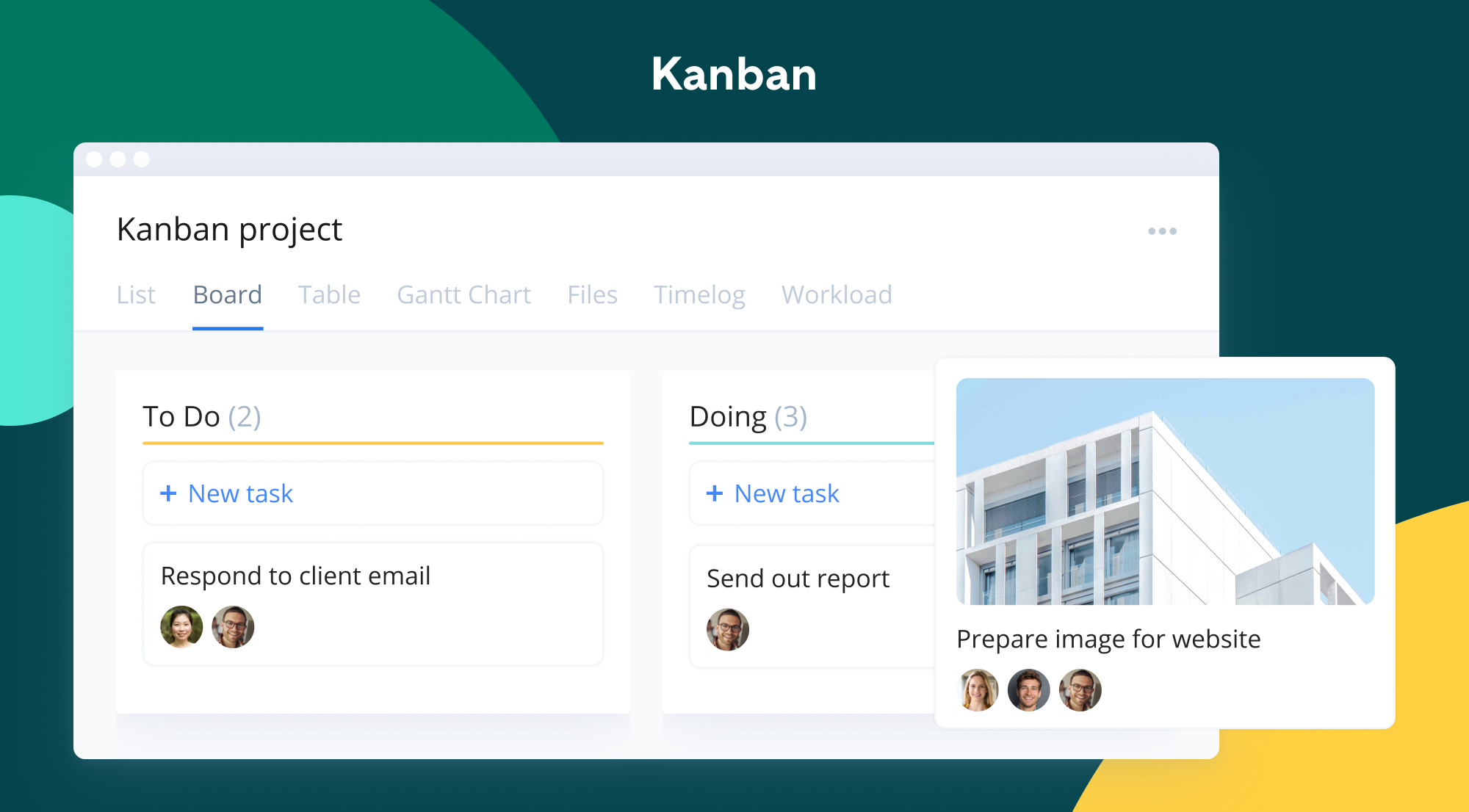
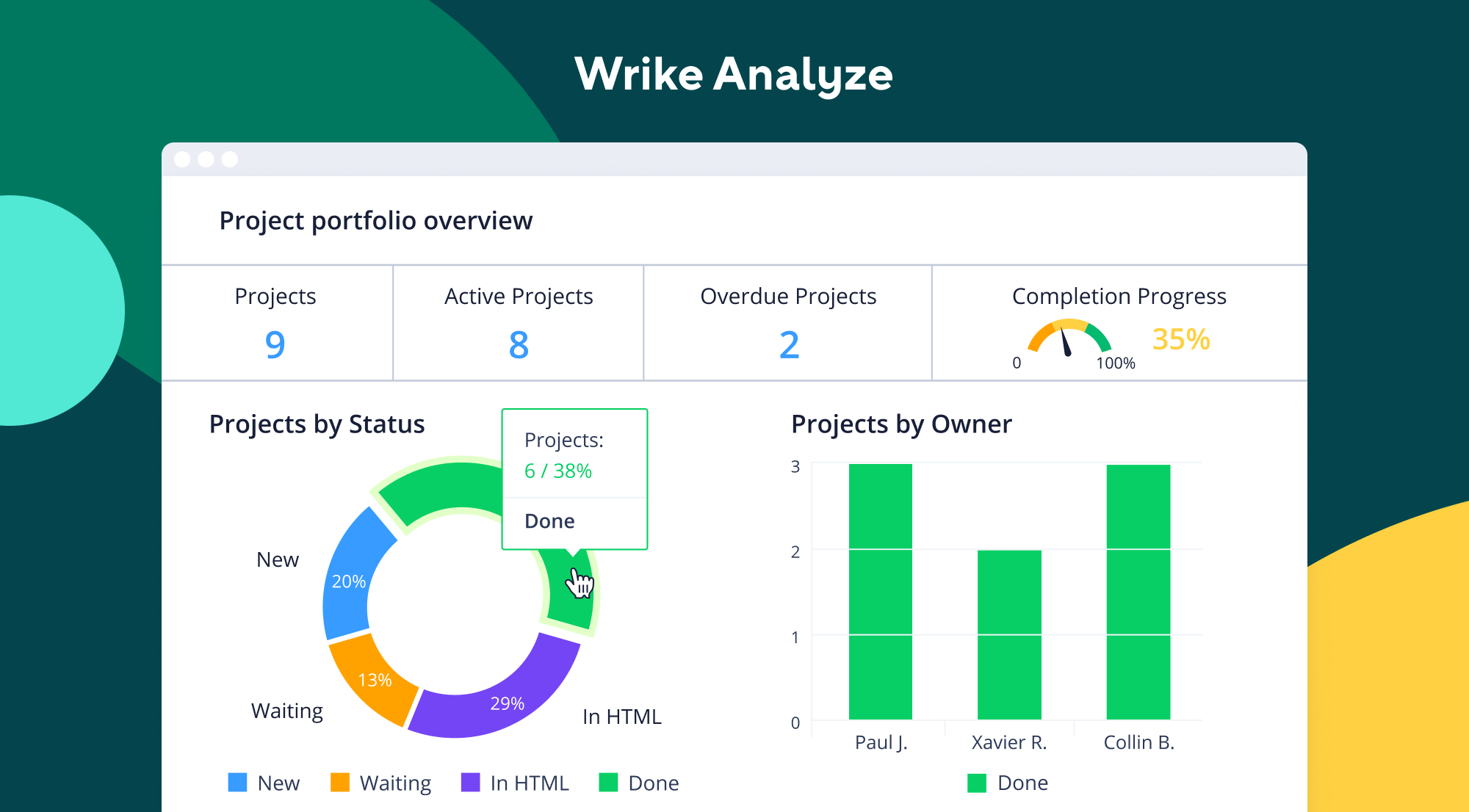
Wrike Review: Is It the Right Project Management Tool for Your Business?
Wrike has been empowering professionals and teams to better manage their work since its launch in 2006. It’s a comprehensive solution for professional service providers, marketing teams, and agencies. But all this versatility comes with a high price tag.
Is it worth it? In this Findstack review, we’re going to find out.
What is Wrike: A Quick Overview
Wrike is an all-in-one work management platform that helps teams collaborate, plan projects, delegate tasks, and track progress. The platform offers a range of plans designed to meet the needs of almost any kind of business. Whether you’re a solopreneur or a department head at a Fortune 500 company, Wrike has a plan for you.

Wrike’s power lies in its ability to support both project management and collaborative work, which explains its appeal to a wide range of industries. The tool boasts a user-friendly dashboard that’s pretty simple to set up. It’s also very easy to create tasks, assign them to team members, set due dates, and track their progress.
Getting Started With Wrike
Wrike is one of the more intuitive project management tools for a new user to get started with—especially compared to competitors like ClickUp.
Wrike is available to users via web browser, desktop application, and mobile application for both Android and iOS devices.
To get started with Wrike, new users have the option to register for a free account using their business email. Once the email address is verified, users will be redirected to Wrike’s homepage to complete the initial registration process—which involves a guided walkthrough.
How Wrike Works: Key Features
Dashboards
If you’ve ever used a project management tool, Wrike’s Dashboards will feel very familiar.

For every project you create in Wrike, you can create Dashboards to display, manipulate, and analyze the project data that you’ve collected within it. They essentially give you an overview of project KPIs, metrics, due dates, and progress at a glance—saving you the hassle of seeking out each piece of data at the source.
When you create a Dashboard, you can start with a template or build one from scratch. If you go the latter route, you have quite a bit of flexibility thanks to a modular design and a wide selection of interactive widgets, including:
- Assigned tasks
- Overdue tasks assigned to you
- Overdue tasks that you assigned
- Tasks you’re following

Wrike is unlike a lot of project management tools because everything you need is right at your fingertips. You don’t need to navigate to another window to see it all.
Automation
Like most modern project management tools, Wrike features an automation engine that works in the background to synch related tasks, assign workloads, and ensure tasks are completed on time with botted @mentions and comments.

Wrike’s automation engine may not be the most complex or versatile on the market, but it’s intuitive and practical. There’s no feature bloat here—every feature is sure to get some use.
Integrations
On a related note, Wrike’s automation capabilities are supported by 400+ integrations with third-party tools. Pretty much every tool category is covered, including:
- CRM
- Communication
- BI
- Calendar
- CMS
- Storage
- Accounting
- Reporting

Integrating Wrike with other tools in your stack is a great way to cut out some busy work from daily workstreams and improve productivity. It’s also a surefire way to minimize human error.
Live Analytics
Wrike automatically updates every report, chart, and dashboard every 15 minutes, so you never miss a thing. 
That’s a huge benefit—it means project managers don’t need to manually collect and input data from multiple sources to draw meaningful insight. Less time on busy work means more time analyzing the data for patterns, trends, and inefficiencies.
This feature is also great for project managers who are juggling multiple projects. They get a real-time overview of project statuses, team workloads, pending approvals, and tasks waiting to be assigned, so they can easily prioritize work and make meaningful progress.
Customizable Forms
Wrike has a custom form builder that you can use to create almost any kind of form—from simple team surveys to content request forms.

Wrike’s forms are fully customizable, and you can take advantage of role-based access controls to grant or deny access to certain pages or sections. Plus, when you create a new form, it can automatically assign tasks, set due dates based on the submission date, and populate subtasks.
Enterprise-level project management tools
Wrike offers advanced project management tools that you can access on your Home workspace to help you measure key performance indicators.
These tools include time tracking to assist in managing billable hours, visualizing cost and budget calculations, and business intelligence to assess project risk. While these tools are particularly useful for large enterprises with complex needs and a variety of teams, they can also be beneficial for small businesses that plan to scale.
In addition, the platform allows you to share files and publish assets with enterprise-grade security. The sheer number of features may be overwhelming for teams new to project managers, but Wrike provides great walkthroughs and tutorials. You may even discover features by accident that end up accelerating your workflows.

Wrike offers pre-built templates based on team roles to simplify task creation. Some of these templates include:

- Project performance templates
- OKR templates
- Weekly to-do list templates
- Kanban board project templates
- Agile and IT templates
- Content operations templates
- Quarterly business review templates
- Ticketing and help desk templates
Collaboration Tools
Wrike—like most project management tools—is designed to make it easier to collaborate with your teams.
All team members have access to a global or project-based live stream of task activity, so nobody is left behind. Team members can easily communicate on specific tasks via comments and notes so that conversations are kept organized. Shared team calendars can be added to the dashboard to help with awareness of progress and submission dates. 
You can also invite third parties such as clients, vendors, or contractors, at no extra cost, to view the status of their projects and provide input that goes towards successful project completion.
Wrike Use Cases
Wrike’s use cases are quite impressive. Over 20,000 companies in over 140 countries have relied on Wrike to streamline their planning processes. These are companies that span a range of industries, including:
- SaaS
- Technology
- Healthcare
- Education
- financial services
- Construction
- Manufacturing
- Retail
What makes Wrike stand out from other project management platforms?
Wrike’s easy-to-create (and even easier-to-understand) Gantt chart view sets it apart from many other popular project management platforms. Plus, Wrike offers a range of other views, such as List, Board, Table, File, and Timelog. While this isn’t unique to Wrike, it isn’t super common to have that much flexibility,

Overall, Wrike’s differentiating factor is the ease with which you can use it to manipulate project data to gain new perspectives and insights.
Wrike Pricing
Wrike offers a total of five plans, starting from a basic Free option, all the way up to an advanced Pinnacle option for large enterprises with complex needs. Paid plans start at $9.80 per user per month, making Wrike’s pricing a bit more expensive than most other project management tools.
Here’s a breakdown of the plans: 
- Free: Wrike’s free plan is suitable for small teams that are just starting with project management software. However, it has limited feature options, including 2 GB of storage space, and excludes Gantt charts, time-tracking, and many customization tools. The number of active tasks for a free plan is also limited to 200, which can be limiting even for small teams.
- Team: This plan starts at $9.80 per user per month and is tailored for small teams that want to plan and collaborate on projects. Fortunately, this plan does include the Gantt chart view, 2 GB of storage per person, and the option to integrate with a wide range of services.
- Business: Priced at $24.80 per user per month, this plan provides access to advanced project management tools. The Business plan has everything you may need for project management for a large team (up to 200 people), with 5 GB of storage per person.
- Enterprise: The Enterprise plan does not have a stipulated price because Wrike will draw up a plan depending on your business needs. It is a plan to consider for large businesses that require more security controls.
- Pinnacle: This plan is for large businesses with complex work needs, including billable hours tools, job roles, and tools for planning and tracking effort put into different projects. It comes with 15 GB of storage per person.
Pros and Cons of Wrike
Pros:
- Wrike offers plans for everyone, from small teams to large corporations.
- Real-time analytics are updated every 15 minutes.
- Wrike offers department-specific solutions which help different departments across your business align and communicate projects on one platform.
- Special customization is available for professional services and marketing and creative teams.
- Wrike offers training resources to help you get started on the platform.
- The free plan offers up to 2 GB of storage.
- It supports eight languages.
Cons:
- Although the project dashboards are user-friendly, those new to project management software may find Wrike overwhelming due to the wide array of features.
- Wrike’s costs can be a burden for mid-sized teams – there are cheaper project management tools with roughly equivalent features.
- Many of Wrike’s useful advanced features are offered as add-ons that can effectively double the price of the tool.
- The mobile app is not as user-friendly as other project management apps (e.g., Click Up). Managing tasks from the mobile app is not as smooth as using a desktop, and you may find that you’re unable to move and edit tasks.
- The interactive Gantt chart view is only available in the paid plans.
- The time-tracking in-app timer is only available on the Business plan and higher, and even small collaborative teams should be able to benefit from this feature.
Is Wrike right for your business?
Wrike is a comprehensive project management platform that also functions as a collaborative work management tool, making it ideal for businesses of all sizes. If you offer professional services or are part of a marketing or creative team, you can certainly benefit from Wrike’s highly customizable features.
It’s important to note that Wrike can be a bit pricey—especially with add-ons. Plus, it may be a bit overpowered for small teams who are looking for simple project management capabilities. That said, it’s a solid tool for managing multiple departments and complex projects.
If you want more insight and information into other project management software, Findstack has more helpful reviews you can take a look at.

Easily adjustable and editable for each project to specifics and details each team needs. Fast and good support from Wrike support personnel. Compared with MS Project or Primavera, Wrike is easier to use and more intuitive. For infrastructure projects, Wrike is an excellent tool to support site teams. Updates, uploads and changes or new works are easily accessible from a cell or office computer for management and ground personnel to have all in one place for easy planning and delivering projects - placing/uploading QA data for handovers of projects.
Software must be adjusted to work smoothly offline and when returning to wifi and cell connection upload changes. Without Wrike-trained personnel, teams who are 1st-time starters will struggle a lot. Team support from Wrike needs to be there - software usage and setup were easy with the support team, and after remote backing was done, the project succeeded.
No more data loss on remote sites. Handover Quality data and the project. All project data was in one place and easily accessible from any place. Team performance increased - even uneducated workers were using it on the ground and became happier to use and be part of Team delivery.
I love the consistency and transparency that we have with our team when using Wrike! We used to use too many spreadsheets and manila folders to track all of our jobs, which frequently got lost and resulted in staff wandering the office to look for the missing folders. Since we implemented Wrike, we now know the status of all jobs with a click of a mouse!
Some of my team have struggled with the switch over to the Wrike New Experience. At first, I also struggled with the transition, however since I have been using it for a few months, I now see the benefits and why Wrike made the decision to make the changes that they did. I am looking forward to continued improvements, as I have seen them steadily since we implemented Wrike in 2019.
One problem that we always had prior to Wrike was not ever knowing the status of a project without asking every person that was assigned to it. With Wrike, you can easily check the status of all projects without having to take up anyone else's time. Another problem that we were experiencing was a lack of timely responses due to too many emails in our inbox. They were getting mixed up vendors, clients, and internal emails. With Wrike, we have almost completely eliminated inter email communication and have moved that to strictly Wrike. This allows for a much more organized email inbox to be utilized with clients and vendors only.
Timing and the fact that 90% of my questions find the answers. I am very satisfied with the Wrike service. Whenever I come with a technical question, the answer is found within 48 hours. Bravo & thank you!
Sometimes, if I have a few questions in a row I am not able to answer all survey requests:)
Project management in a unified way, interactive reporting.
One of the upsides of wrike is his gantt Chart. Its very easy to use, assign tastks and watch the progress. Gantt Chart is the tool I use the most. Thank you wrike
The gantt chart have some bug's in the zoom in button. The screen is crushed and the rows change places for no reason. This causes mistakes to be made when assigning tasks.
One problem that Wrike solved was the project management in producing long audiovisual projects. When I began to use this correctly, my team performed better. Thank you wrike
It helps me filter the tasks that I need to work on firsthand and the tasks that are already completed.
Somehow it confuses me when I still see some tasks that are not for me in my dashboard.
It helps my tasks get organized and it is very easy to use. I think this is the main benefit, that it's not that complicated.
managing tasks in an easy manner. Ease in use.
Nothing to dislike, but we can be make it more userfriendly.
With Wrike, we are able to track all tasks' timing and make decisions accordingly for future planning.
I'll say this first, Wrike felt intimidated. After messing around with it and seeing how other co-workers use Wrike, I slowly picked it up. It makes a good checklist of things I need to do if you add the chrome plug-in as a companion. I see what gets assigned. I LOVE when you reference another wrike, you can see the status of it in the description of another. Very handy! Conveniently, Wrike contains a few forms of automation that lift some repetition from your workload. Without that, it wouldn't be as helpful as other task management systems available in the market. I like how the eco-system allows mentioning other users within a comment or Wrike task. It helps involve the correct people to get the jobs completed. Another feature that is VERY useful for me is the tags. Tagging helps me know where this Wrike is related to, which makes everything come together.
As I mentioned before, going into it without help is very discouraging since it's a complex web API with many moving parts. I think to myself, how do I add custom rules to automate some tasks? Unfortunately, you need to dig for that answer since it's not straightforward. I would like it if Wrike provided an easier way to implement the chrome plug-in and have a way to make templates via the plug-in. It would make managing my tasks substantially easier if that were possible.
It's solving a lot of organizational task management issues. It helps keep everyone on point about what you should be doing and when the task is due. Helps that when I go OOO, it notifies project managers that I won't be available. Another way it's helping me is by providing a way to track how much time I spend on each task. By using the timer, I can estimate how much I take and figure out a way to optimize my time and know how to allocate that time to essential tasks that require my attention more. Other things that help me solve are keeping everything in one place and showing me what's related to which Wrike.
It is a great visual tool for tasks and assignments It helps with productivity and organization It keeps a good level of performance review
Probably the number of irrelevant notifications when adding tasks or changing a part of a project.
Task management difficulties. Inefficient communication when assigning tasks Difficult visualization of dashboards It helps with productivity and organization It keeps a good level of performance review
- creating projects, tasks and subtasks with dates and statuses for them individually - dashboards are highly effective in grouping your specific custom fields - great to add tasks to multiple projects - easy to use - great workflow system - great tool for time management, keeping on top of deadlines and deliverables for projects
- Unable to view certain statuses in the calendar format - can't show the day viewpoint in the calendar
- issues of specific tasks and subtasks being due at different times and can easily manage that - various viewpoints (dashboards, table format, calendar, etc) to see tasks due and coming up - easy to manage in terms of changing dates and statuses - can easily keep on top of things in terms of business timelines and deadlines - can easily see specific assignees tasks - easy workflow use
Task management is excellent. We are using a workflow plugin which works best to see teams' occupancy.
Reports can be better. The desktop report should have more categories/filters.
We are solving our billable-nonbillable categorisation problem in our organisation which wrike solve in the best way.
I believe that it is really user friendly, and great for keeping up with individual PM Tasks.
I hate that you cannot duplicate with in a folder.
My company uses Wrike for project management implementation. It is how we track the traction of all of our clientele.
Wrike is a versatile platform capable of managing simple and complex business process needs. It's also an intuitive tool that new users can pick up rapidly.
The platform doesn't always give you full control of user permissions.
Wrike helps to align on key stakeholders on the progress and details pertaining to a project.
I love how easy it is to group projects together, allocate work hours, and collaborate with users outside the system.
I wish there were a way to integrate the calendar function with a Google calendar so specific tasks in my Wrike calendar could also be on my Google calendar.
Wrike makes it so easy to send current projects to be reviewed by an outside collaborator and tracks their comments/emails right in the system. This reduces the amount of time that I have to spend going back and forth between a system and my email to send an update or to ask for an approval!
It has been very easy to find my way around the system. I have used others, so perhaps it is a function of knowing these types of systems, but I haven't had any issues getting around.
No major concerns at this point. We have managed create quite a few new projects and everyone is working through them.
We are using Wrike for project management, ISO compliance, and quality issues management. All use cases have worked well in the system.
I love that with Wrike I can keep all my project organize and collaborate easily with my coworkers! My favorite features are the calendar and the ability to set up specific boards.
I really don't have anything negative to say about Wrike. I feel like it's easy to use and helps keep me organized and on task during my work day. The emails can get overwhelming but I keep them on so I never miss any new messages in my inbox.
Wrike has solved the problem of too many meetings. Many things can be decided through Wrike. The best feature in my opinion is that you can upload a file and select it for approval.
Wrike has many good qualities and features, but one of the most helpful features is that we can check our workload from our team with just one click. That can help me to prioritize between projects or new initiatives.
I dislike that you have to pay for an upgrade to the last version to get Analytics of your projects. It could be beneficial if they could allow you to use it monthly.
Wrike helps us to figure out how our capacity has been used in terms of hours, how many hours we are using, and how many hours we are losing
Manage several events simultaneously across teams making collaboration easy and also great at tracking our OKRs, targets and progress
Greater personlisation of some dashboards would be useful, especially within my Personal space so it is easier to group tasks against projects or types of projects.
Different functions within Marketing are working together on several projects at the same time without needing to arrange several separate meetings to monitor progress which is great.
How easy it is to customize and continuously improve with a few clicks. I have implemented Wrike at two different employers and the response is always astounding. Wrike truly changes people's lives and allows them to work smarter.
This will sounds strange, but it has so much functionality, that sometimes it's overwhelmeing. You really need to become a Super User.
Wrike is solving several business problems, such as, bringing remote workers together to collaborate and align on priorities. Wrike is also solving the business problem of providing visibility to leadership.
I believe I can say this on behalf of all the users in my organization that the user interface of Wrike is easy to get used to and understand. It is regularly updated, and the bugs that are found might be solved quickly because I have never come across any bugs in the entire duration I have used Wrike to manage tasks and projects. Another thing that I love the most about Wrike is its mobile application. It allows us to use it from anywhere and expect the same user interface and productivity that we use on the web browser of our computer system. It also becomes convenient as we can manage all our tasks while traveling.
There aren't many problems that I can think of, but there is always scope to improve something, and the things I noticed while using Wrike was that the tasks created a long time ago are really hard to find once they are completed or when it's been a while since those tasks have been accessed. There were plenty of such instances where we had to put in a lot of time trying to find old tasks, especially if you do not recall a keyword that was used in the title of the task. Another important bug that should be looked into is that when typing in the description box of a task, an email is sent to all the stakeholders even before you finalize the content of the description, which is a hassle. A delay or pause should be added, or if one already exists, it should be increased so that an email is sent to the stakeholders only after the entire description is added to the task.
It has helped our organization in many ways: Helped our organization managing projects between different users, teams, internal stakeholders, and external stakeholders. Helped our organization in saving a significant time and effort. Helped our organization in keeping a track of our tasks and allow us to follow up on work easily.
The Wrike platform is an easy-to-use system that allows for updating multiple line items at a time, while maintaining real-time accuracy of timelines and processes.
Calendars are not able to be viewed on the mobile app. This is a small hindrance when looking at schedules on the fly. We have found a workaround to ensure all data that is required is easily attained through another chart/report.
Providing transparency to the leadership team is key to building a solid project management office. The reports that are set up. allow for a quick recap of all active projects and demonstrate the phase in which each project is currently in.






